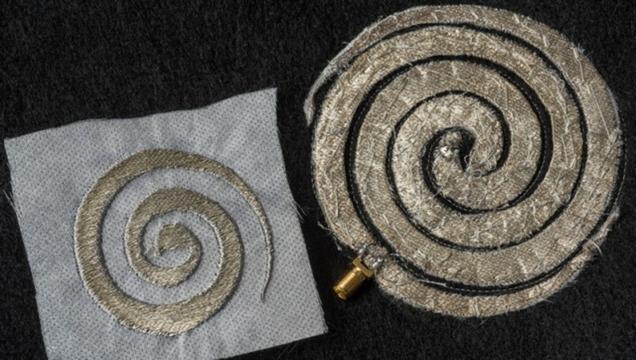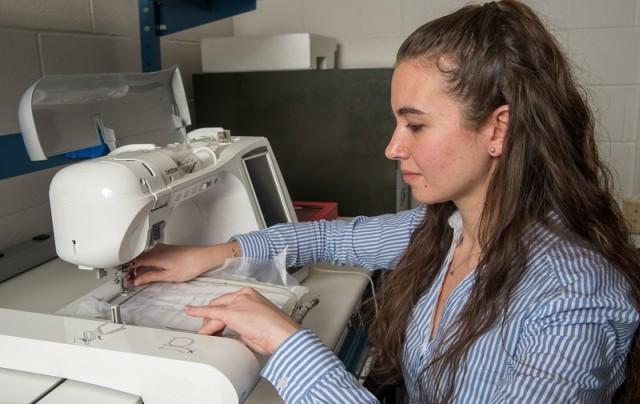
If you use a sewing machine, you can sew in 15 minutes.Wearable electronic circuits are realized by embroidery
The era may come soon to your favorite T -shirt becoming an antenna for your smartphone.
Ohio State University (OSU) made silver wires, sewing machines, and newly obtained patented "E-Textile" embroidery antennas.
This high -precision circuit is not only decorative but also functional, perfect for electronic components sewn into clothing.It is much cheaper, faster and accurate than the team's early prototypes.The results of this research were just announced this week in the "IEEE Antennas and Wireless Propagation Letters" journal.
"I asked myself how to use a well -known technology called mechanical embroidery, and how to make the form of embroidery functionally. For example, send signals at practical frequency that can be used with mobile phones and health sensors.Can you do it? "
画像:OSUのAsimina Kiourtiが高精度刺繍技術をデモンストレーションする様子When you hear that, it sounds difficult, but this is a surprisingly simple technology.I just used the sewing machine to a thin wire fiber.This wire fiber is coated with pure silver.If you read the data of the embroidery pattern into the sewing machine, the sewing machine will automatically sew.The price of the wire is 0.3m is 3 cents (about 3).For 3 yen), it is about 30 yen to sew one embroidery antenna.It takes only 15 minutes for the process.

The shape of embroidery is important for this antenna.Because the frequency is determined in this form."The shape determines the function," said ASIMINA KIOURTI, the co -author."I don't know what kind of form will be needed, so I needed a technology that could embroider any form."
The antenna (top image) made of spiral embroidery that seems to appear in Junji Ito's manga "Uzumaki" seems to be the best frequency to increase the receiving sensitivity of mobile phones if sewn in clothes.
The image above, the OSU logo-shaped circuit is made of non-conductor red, gray thread and silver wire, which prove that "E-textile has both decorative and practicality.It seems to be a demonstration.For broadband antennas, there are some small grid geometric patterns (each emits different frequency).
At the next stage of this project, we want to incorporate electronic components such as small receivers and sensors to provide a wider range of functionality.Volakis says, "I want a larger sewing machine."
All Images: JO McCulty/Ohio State UNIVERSITY)
Source: nanowerk News
Jennifer Ouellette -Gizmodo US [Original text]
(ABCXYZ)
